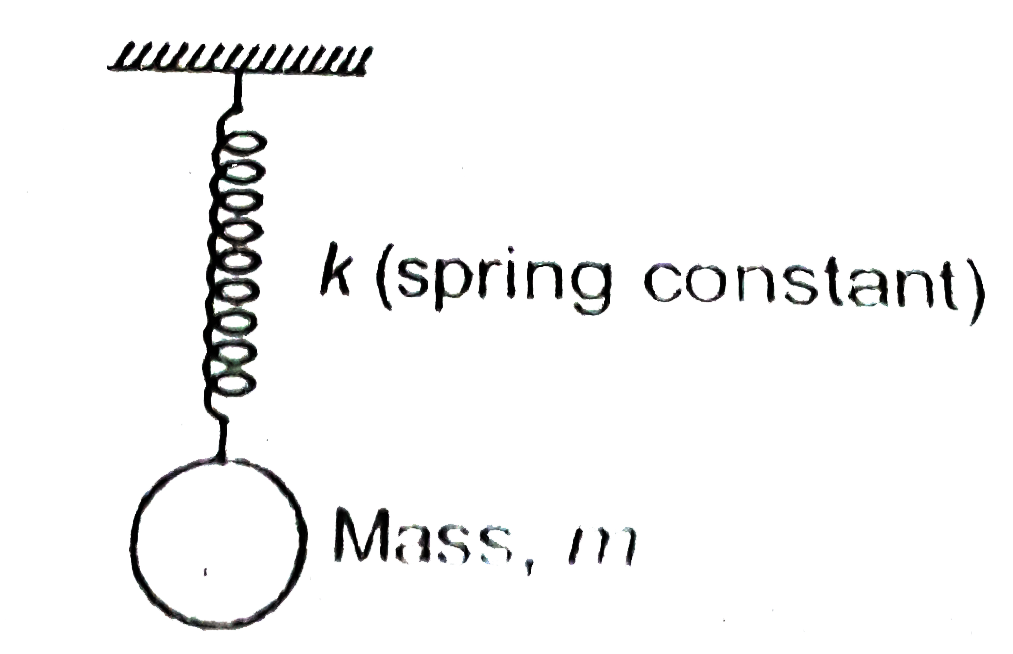A lift is moving up with a constant acceleration a. A man standing on the lift, throws a ball vertically upwards with a velocity v, which returns to the thrower after a time t. show that v=(a+g)t2 where g is the acceleration due to gravity. Solution in Bengali
The downward acceleration of the ball with respect to the lift =g(-a)=g+a.
The initial velocity of the ball is v upward. As the ball returns to the thrower, its relative displacement is zero.
Hence, from the equation h=ut−12gt2, we get ,
0=vt−12(g+a)t2or,0=r{v−12(g+a)t}
Since t≠0,
∴v−12(g+a)t=0or,v=(a+g)t2.
Topper's Solved these Questions
- BOOK - CHHAYA PUBLICATIONCHAPTER - VECTOREXERCISE - Section Related Questions23videos
VECTOR
- BOOK - CHHAYA PUBLICATIONCHAPTER - VECTOREXERCISE - Higher Order Thinking Skill (Hots) Questions28videos
VECTOR
- BOOK - CHHAYA PUBLICATIONCHAPTER - THERMOMETRYEXERCISE - EXAMINATION ARCHIEVE - WBJEE1videos
THERMOMETRY
- BOOK - CHHAYA PUBLICATIONCHAPTER - VISCOSITY AND SURFACE TENSIONEXERCISE - EXERCISE (CBSE SCANNER)9videos
VISCOSITY AND SURFACE TENSION
Similar Questions
Distinguish between scalar and vector quantities.
02:51View SolutionUnder which condition will the magnitude of scalar sum be equal to the magnitude of vector sum ?
04:55View SolutionA scientist proposes a new temperature scale in which the ice point is 25X (X is the new unit of temperature) and the steam point is 305X. The specific heat capacity of water in this new scale is (in J⋅kg−1⋅X−1)
06:18View SolutionState and prove Bernoulli's theorem.
01:57View SolutionA body is thrown up in a lift with a velocity u relative to the lift, and returns to the lift in time t . Show that the lift s upward acceleration is (2u-gt)/(t) .
02:46View SolutionForm a lift moving upwards with a uniform acceleration a=2ms−2,manthrousaballverticallyupwardswithavelcoityv=12ms−1 relative to the lift. The ball comes back to the man after a time t. Find the value of t in seconds.
06:11View SolutionA man in a lift ascending with an upward acceleration a throws a ball vertically upwards with a velocity v with respect to himself and catches it after t1 seconds. After wards when the lift is descending with the same acceleration a acting downwards the man again throws the ball vertically upwards with the same velocity with respect to him and catches it after t2 seconds?
10:19View SolutionTime period of a spring pendulum when lift moves downward with constant velocity v is T second. When the lift moves upward with constant acceleration=g3 , the time period will be
 02:26View Solution
02:26View SolutionFrom a lift moving upwards with a uniform acceleration a = 2 ms^(–2) , a man throws a ball vertically upwards. with a velocity v = 12 ms^(-1) releative to lift the ball comes back to the man after a time t find. t
03:17View SolutionA particle is thrown up inside a stationary lift of sufficient height. The time of flight is T. Now it is thrown again with same initial speed v0 with respect to lift. At the time of second throw, lift is moving up with speed v0 and uniform acceleration g upward (the acceleration due to gravity). The new time of flight is:
03:04View SolutionA man in a lift throws a ball upwards with velocity v and catches it in time t _(1) when lift is moving up with some acceleration. Again he throws a ball up with same velocity 'V' and catches it in time 't _(2) ' when lift is moving down with same acceleration.Velocity of projection V is
06:48View SolutionA man of weight w is in a lift which is moving up with an acceleration a.If acceleration due to gravity is g, apparent weight of the man will be
01:39View SolutionA man in a lift throws a ball vertically upwards with a velocity v and catches it (i) after t_(1) second when the lift is ascending with an upward acceleration of 'a' and (ii) after t_(2) second when the lift is descending downward with the same acceleration 'a'. THe velocity of the ball v is
04:01View SolutionA body is thrown up in a lift with a velocity u relative to the lift, and returns to the lift in time t. Show that the lift's upward acceleration is (2u-gt)/t
03:41View SolutionA man in a lift ascending with an upward acceleration a throws a ball vertically upwards with a velocity v with respect to himself and catches it after t_1 seconds. After wards when the lift is descending with the same acceleration a acting downwards the man again throws the ball vertically upwards with the same velocity with respect to him and catches it after t_2 seconds?
View Solution

